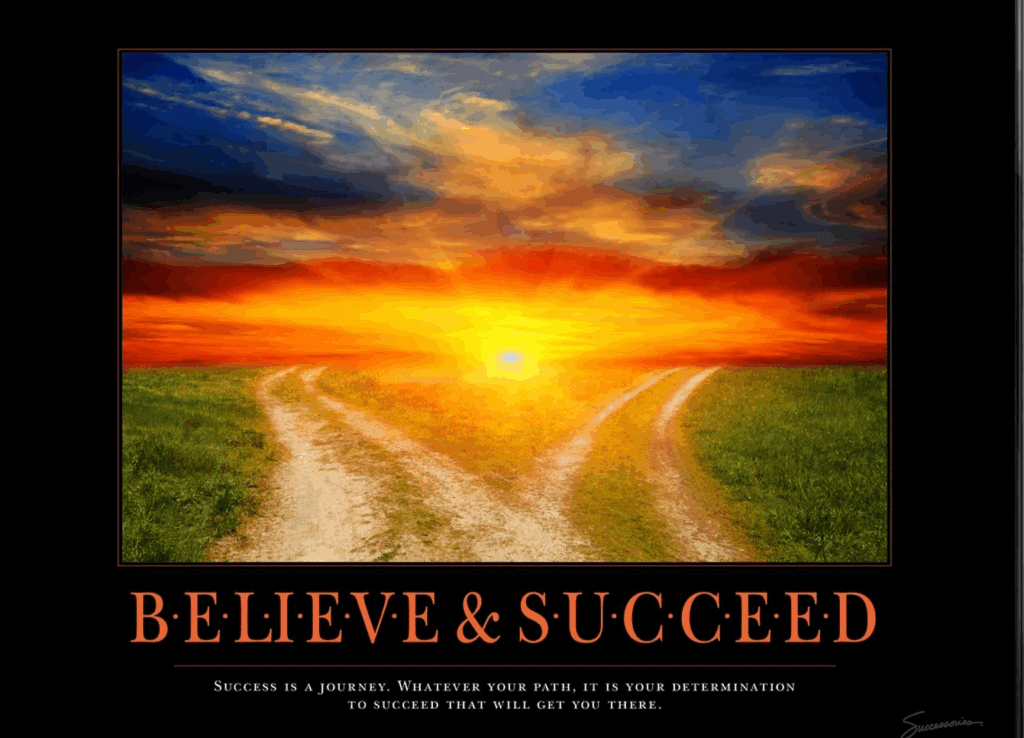“Dream big!”
“Hang in there, Baby.”
“You can do it!”
“Nothing is impossible. The word itself says ‘I’m possible’.”
We’ve all come across inspirational posters bearing these slogans (or countless others like them) at some point. Many people dismiss them right away as a cheap and clumsy attempt to raise morale. And admittedly, at first glance, they don’t seem like the driver that will inspire us to have more creative ideas or work harder to achieve our goals.
But as tacky as they are, they are actually more effective for creativity than we may think.
And it’s thanks to a psychological concept known as priming.

What is Priming?
The Priming Effect refers to the way that experiencing one stimulus can subconsciously influence how we respond to another.
It’s easiest to see with word association tasks. For example, someone first shown the word “blue” and then presented with a long list of words, one of which being “sky”, they will recognize that word more rapidly than the others because they associate it with the priming word.
Numerous studies have shown priming can shape our behaviour, too. In one experiment, people who were asked to unscramble sentences containing words related to health and fitness were more likely to make the choice to be active afterward , such as taking the stairs rather than the elevator after the experiment.
How Priming Can Influence Behavior
Likewise, priming can also happen at an emotional level in a process known as “affective priming” where we transfer our emotional responses from the first stimulus to ones that come after. As a real-world example of this, brands sometimes intentionally use stimuli in the form of colours or language to prompt people to think of certain characteristics or emotions, which then become associated with their products.
Scientists think priming can be attributed to schemas, shortcuts we use to retrieve information from our long-term memory, becoming linked due to being activated so close together. How long this kind of effect will last depends on the individual and the nature of the priming. Studies show results ranging from a few seconds to a week or more.
So yes, those cringy posters could actually be motivating us to think creatively, at a subconscious level, even while, consciously, we’re rolling our eyes at them.

Priming for Creativity
Being exposed to stimuli about accomplishment and achievement can prompt people to perform better on tasks and make progress toward their goals. In that way, creativity can be triggered by priming.
At a high level, being exposed to stimuli related to imagination and open-mindedness could nurture a more inventive way of thinking during the ideation phase of the creative process. Likewise, achievement-related language could help encourage focus during the execution phase.
Affective priming can lead to a positive mood, too, something which has been shown to improve creativity. Since a positive outlook can lead to better motivation, being primed with stimuli that boosts dopamine production (generally, things that make us feel happy or relaxed) might increase our chances of making progress on a creative goal.

Tips for Using Priming to Boost Creativity
When it comes to thinking about how you can intentionally prime yourself, it’s important to remember that priming happens on a subconscious level. So there’s a good chance that if you make the priming deliberate – something you have to consciously think about – it won’t be effective in the same way.
However, there are ways that you can customize your environment and routine with subtle cues to increase your chances of being primed for creativity. Here are a few to experiment with.
Display the Magic Words
Words are a common priming technique in experiments.
Surround yourself with language related to creativity, open-mindedness, and motivation. If motivational posters aren’t your thing, perhaps look up some particularly inspiring quotes from your favorite creatives to display around your workspace.
Use Color Psychology
Particular colors can help to induce certain emotional states, so you could use them for affective priming. Blue is commonly associated with creativity and calm, whereas red is generally more arousing and linked to alertness and productivity.
These color associations will differ between individuals and can vary depending on your cultural background though, so play around and discover what works for you.
Appeal to Your Senses
Don’t just focus on what you can see in your environment – all of your senses could be useful.
Think about the scents, sounds, tastes, and textures you surround yourself with. You could look for things that boost your mood, help you stay calm, or that you find exciting, whatever you think will be most beneficial for your creative work.
Think About Creative Wins
One of the ways people are primed for creativity in experiments is by asking them to think about previous occasions where they were creative.
Regularly reflecting on creative wins could be a brilliant way to prime yourself to achieve the next one. As well as reminding you of the necessary mindset, it also boosts your mood and motivation.
Get Early Inspiration
Start your day with a dose of inspiration or motivation.
You could spend your commute listening to a podcast or an audiobook that touches on the behaviors you want to prime yourself for. Whether you listen to an artist sharing their creative process or read about how a successful person achieved their goals, the language could trip the right switches in your mind.
You can also do this in a more subtle way, with music. Musical cues have been shown to induce different moods during affective priming experiments. While you can obviously choose based on lyrics, other aspects like the key and the tempo could have just as big an impact on your mood.
Prime Yourself to Boost Creative Thinking
Our environment and experiences are constantly influencing the way we think and act at a subconscious level. Thanks to the priming effect, everything from the language we hear to the colors we see could impact how we respond to a subsequent situation without us being aware of it.
By customizing your environment to nurture creativity and boost your motivation, you can make sure the priming stimuli you’re exposed to will nudge you to take a more inventive, open-minded approach to your work. And yes, that could even include tacky motivational posters.





